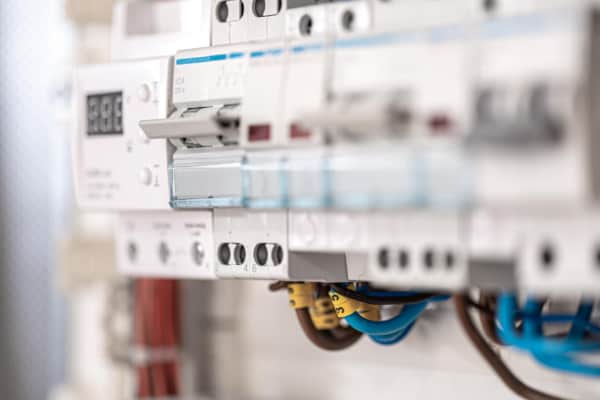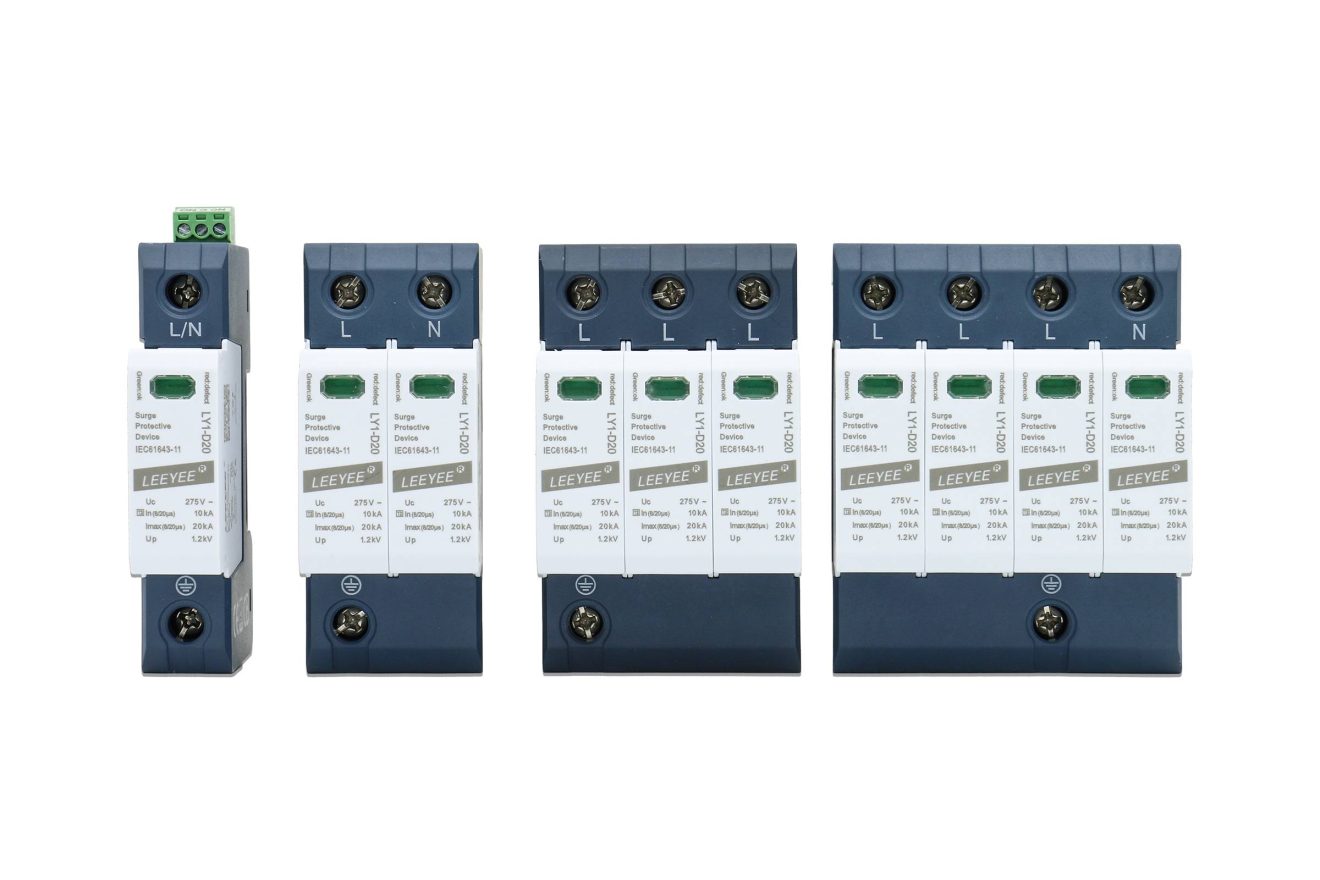As seasoned electrical professionals, you understand the critical role Surge Protective Devices (SPDs) play in safeguarding sensitive equipment and ensuring system reliability. However, the issue “Surge Protector Keeps Tripping” is a common and often perplexing issue that requires careful diagnosis. This isn’t just a minor inconvenience; it signals an underlying problem that needs immediate attention to maintain protection and prevent potential damage or hazards.
Let’s break down the common reasons why a surge protector keeps tripping and the professional steps required to identify and resolve the issue.
What “Tripping” Means for an SPD?
Unlike a circuit breaker that trips on overcurrent, an SPD typically doesn’t have a conventional “trip” mechanism in the same sense. When we say a surge protector “trips,” it usually refers to one of two things:
- Indicator Showing Fault/End-of-Life: Many SPDs have visual indicators (like lights or flags) that change state when the internal protective components (like MOVs – Metal Oxide Varistors) have absorbed too many surges or a single, very large surge, reaching their end-of-life or being damaged. This indicates the SPD can no longer provide adequate protection and needs replacement.
- Disconnecting Mechanism Activation: Some higher-end SPDs include internal or external disconnectors (thermal or overcurrent) designed to safely remove the SPD from the circuit if it fails short or experiences a persistent overcurrent condition (though this is less common for transient surges themselves and more related to SPD failure modes or wiring faults).
So, when a surge protector keeps showing a fault indicator or activating a disconnect, it’s a clear sign something is wrong.
Why a Surge Protector Keeps Tripping

Based on our experience in the field and manufacturing, here are the primary culprits behind a frequently “tripping” SPD:
1. Frequent or Large Power Surges (Transient Overvoltages)
This is the most direct reason. The SPD is doing its job by diverting surges, but if the surges are happening too often or are too powerful for the SPD’s rating, it will wear out its protective components rapidly.
Lightning strikes (direct or indirect), utility grid switching, switching of heavy inductive loads within the facility (motors, transformers), capacitor bank switching.
Professional Check: Has there been recent lightning activity? Is there heavy machinery cycling nearby? Are there issues with the utility supply? Monitoring the line voltage for transients might be necessary.
2. SPD is Undersized or Incorrectly Specified
The SPD’s voltage protection rating (VPR), nominal discharge current (In), and maximum discharge current (Imax) must be appropriate for the expected surge environment and the system voltage. An SPD with insufficient capacity for the surges it’s exposed to will fail prematurely.
Professional Check: Review the system’s risk assessment (location, exposure level) and compare it against the SPD’s specifications. Was the correct SPD Type (Type 1, 2, 3) selected for the installation location?
3. Faulty Wiring or Installation Issues
Incorrect connections, loose terminals, or wiring errors can stress the SPD or expose it to conditions it wasn’t designed for, leading to premature failure. Issues with the grounding system are particularly critical, as SPDs rely on a low-impedance path to ground to divert surges effectively.
Professional Check: Perform a thorough inspection of the SPD’s wiring, connections, and the overall grounding system integrity. Verify connections match the manufacturer’s instructions and relevant electrical codes.
4. Persistent Overvoltage Condition (Not a Transient Surge)
While SPDs are for transient overvoltages, a sustained overvoltage condition on the line (e.g., due to utility issues, faulty voltage regulators) can cause thermal stress on SPD components like MOVs, leading to failure.
Professional Check: Measure the line voltage over a period to identify if it’s consistently above the nominal voltage.
5. End-of-Life or Manufacturing Defect in the SPD
Like any electrical component, SPDs have a lifespan, typically measured by the number or magnitude of surges they can handle. If an SPD is old or has been subjected to many events, it may simply be at the end of its service life. While rare with quality manufacturers, a defect could also cause premature failure.
Professional Check: Check the SPD’s installation date and history of surge events. Inspect the unit for signs of physical damage or overheating.
Troubleshooting Steps As Electrical Professionals
When faced with a surge protector that keeps tripping (indicating fault), follow a systematic approach:
- Safety First when Surge Protector Keeps Tripping: Always de-energize the circuit before inspecting or working on the SPD or associated wiring.
Inspect the SPD: Visually check the SPD for any physical damage, discoloration, bulging, or signs of overheating. Note the state of the fault indicator. - Verify Installation: Confirm the SPD is installed correctly according to the manufacturer’s instructions and relevant electrical codes (NEC, IEC, etc.). Pay close attention to wire gauge, connection torque, and lead lengths (shorter is better for surge protection).
- Check Grounding: A low-impedance ground path is paramount. Verify the integrity and resistance of the grounding electrode system and the connection to the SPD.
- Assess the Environment: Talk to the client about recent events—lightning storms, power outages, utility work, or changes in connected equipment.
- Evaluate System Design: Review the initial surge risk assessment. Is the installed SPD appropriately rated for the location (service entrance, sub-panel, point-of-use) and the expected surge levels?
- Test (If Applicable): Some advanced SPDs allow for testing, but often, if the fault indicator is active, the unit needs replacement. Do not attempt to “reset” a faulty SPD indicator; it’s showing a genuine failure.
- Recommend Replacement: If the SPD indicator shows a fault, the unit’s protective capacity is compromised. It must be replaced to restore surge protection.
Choose Quality SPDs and Correct Specifications
A frequently failing SPD isn’t just a nuisance; it means the downstream equipment is left vulnerable to damaging power surges. Choosing reliable, high-quality SPDs and ensuring they are correctly specified and installed are non-negotiable aspects of professional electrical work.

This is where partnering with a specialized manufacturer makes a difference. Established in 2009, LEEYEE is a specialized manufacturer of surge protective devices (SPDs). We understand the nuances of surge protection and the demands placed on these critical components in various applications.
Our commitment to quality is backed by international certifications, including CE, CB, ISO9001, and TUV. These certifications provide assurance that LEEYEE SPDs meet stringent safety, performance, and quality management standards, giving you confidence in the reliability of the products you install.
Furthermore, we recognize that every installation can have unique requirements. That’s why we support customization options for color appearance, parameters, and logos. This allows you to source SPDs that not only perform flawlessly but also integrate seamlessly with specific project needs or your company’s branding.
Conclusion
When a surge protector keeps tripping (indicating a fault), it’s a clear signal that its protective elements are exhausted or there’s an underlying issue with the electrical system or the SPD’s application. For electrical professionals, this requires a systematic investigation to determine the root cause—whether it’s frequent surges, incorrect SPD selection, wiring problems, or the unit reaching its end-of-life.
Addressing the issue promptly and installing a correctly specified, high-quality replacement SPD is essential to maintain effective protection against transient overvoltages. Trusting a specialized manufacturer like LEEYEE, with a proven track record and commitment to certified quality, ensures you are providing your clients with reliable surge protection solutions. Don’t let a tripping SPD become a gateway to costly equipment damage; diagnose the problem and restore robust protection.
* Disclaimer
This article is intended for informational purposes and provides general guidance for electrical professionals. Troubleshooting and working with electrical systems carry inherent risks. Always follow proper safety procedures, de-energize circuits before working, and consult relevant electrical codes and standards (such as NFPA 70/NEC, IEC standards, and local regulations).
For homeowners or individuals without qualified electrical training, attempting to diagnose or fix issues with surge protectors or electrical wiring is dangerous. Always consult a qualified, licensed electrical professional to inspect, troubleshoot, repair, or install surge protective devices and address any concerns about your electrical system. They have the expertise, tools, and knowledge to safely assess the situation and provide appropriate solutions.
